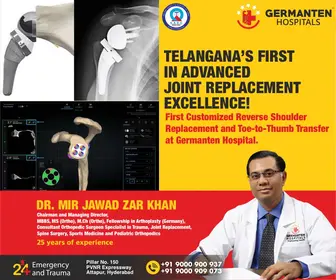
Regulation is often viewed through a narrow lens—as a shield protecting citizens from market failures, corporate misconduct, and unsafe practices. However, it serves a much broader function, encompassing moral obligations, social responsibilities, and economic efficiency. Despite its significance, the path to regulatory excellence remains fraught with challenges, from bureaucratic inefficiencies to political interference and regulatory capture.
Challenge of regulatory expertise
One of the most pressing concerns in regulatory discourse is the expertise of regulators. Regulatory bodies require domain specialists, such as economists, technologists, and legal experts, who can navigate the complexities of modern industries. Currently, many Indian regulators are decades behind in technological expertise, making it difficult to oversee rapidly evolving sectors such as artificial intelligence, financial technology, and cybersecurity. To address this, India must reassess its approach to recruiting and nurturing regulatory talent. Instead of defaulting to career bureaucrats, a more dynamic approach—incorporating lateral hires from industry and academia—could enhance regulatory competency. Some progress has been made in institutions like the Securities and Exchange Board of India (SEBI) and the Drug Controller General of India (DCGI), where leadership is being sourced from outside the traditional bureaucratic pipeline. However, these efforts need to be institutionalised, rather than being sporadic exceptions.
Perils of regulatory capture
One of the less-discussed but deeply entrenched issues in regulation is regulatory capture—the undue influence of industries over their regulators. This is particularly evident at the state level, where local politicians and businesses often exert pressure on regulators to adopt lenient policies. This phenomenon is not unique to India; even in developed economies, corporate lobbying plays a significant role in shaping regulations. Transparency is the key to addressing this challenge. Making inspection reports, policy discussions, and regulatory decisions publicly accessible can deter corruption and promote accountability.
Judiciary and regulatory bottleneck
An often-overlooked factor in regulatory inefficiency is the role of the judiciary. While parliamentary statutes empower regulatory bodies, almost every decision they make can be challenged in court, leading to prolonged delays. Cases often travel from tribunals to high courts and ultimately to the Supreme Court, stalling critical regulatory actions. This judicial backlog not only weakens enforcement but also erodes public confidence in regulatory institutions. To streamline this process, specialised regulatory tribunals with expedited decision-making powers could be established. Additionally, ensuring that judicial bodies handling regulatory disputes are staffed with subject-matter experts can enhance the efficiency and accuracy of their rulings.
Need for quality regulation
Good regulation is not about blindly replicating models from other countries; it must be tailored to the socioeconomic realities of the nation. India’s data protection framework, for example, closely mirrors the European Union’s General Data Protection Regulation (GDPR). It came into effect on May 25, 2018, and aims to give individuals more control over their data. While international best practices are valuable, regulations must be anchored in local aspirations and governance needs rather than being direct imports from foreign legal systems.
Strengthening consumer protection
Regulatory excellence is ultimately about safeguarding the public interest. In sectors such as pharmaceuticals, the challenge extends beyond regulating doctors and pharmacists to ensuring that drug manufacturing, distribution, and sale are closely monitored. The increasing prevalence of antibiotic resistance, for instance, underscores the need for stringent prescription guidelines and enhanced consumer awareness.
Moreover, emerging threats like cyber fraud demand urgent regulatory attention. The financial losses from cybercrime in cities like Bengaluru, where senior citizens are frequently targeted, underscore the need for stronger enforcement of data privacy laws. Regulatory bodies must be equipped with adequate resources and expertise to address such evolving challenges.
The road ahead
Achieving regulatory excellence requires a multi-pronged approach: reducing bureaucratic inertia, enhancing expertise, strengthening coordination among regulators, and fostering greater transparency. It is not about having to make a choice between reregulation and deregulation but about finding the right balance, where rules are clear, enforcement is consistent, and regulatory bodies are insulated from political and corporate influence. By systematically analysing the traits of a regulator, assessing their actions, and measuring outcomes, we can create a structured approach to regulatory excellence. This framework enables us to evaluate existing regulations, identify areas for improvement, and implement necessary reforms. The journey towards regulatory excellence is long, but the first step is acknowledging its urgency and acting decisively. By embedding these principles into its regulatory approach, India can build a system that is not only robust and resilient but also future-ready.
(The Centre for Development Policy and Practice held a conference in Hyderabad on March 28, 2025, titled “Development Policy and Practice Conference, March 2025.” This article is based on the panel discussion on “Regulation in India to Move Towards Excellence.”
It is part of an ongoing series on the state of regulation in India, which explores the gaps, opportunities, and future directions across key sectors. Stay tuned.)
Sejal Gupta is a Senior Research Fellow at the Centre for Development Policy and Practice (CDPP). She is currently associated with the CDPP Regulation Project, covering emerging, infrastructure, and consumer sectors.



